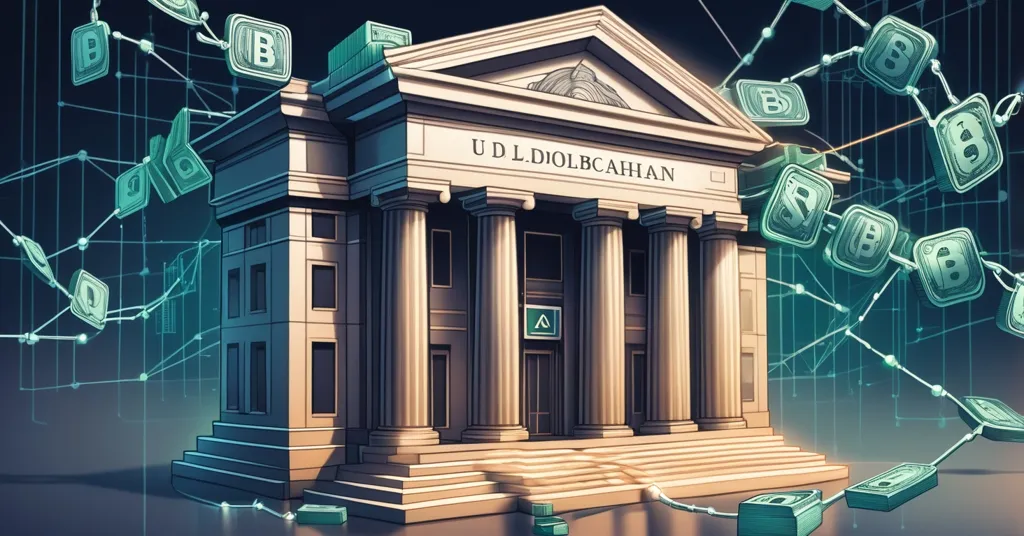Custodia and Vantage Bank Launch Avit Stablecoin on Ethereum, Tokenizing U.S. Dollar Demand Deposits

Custodia Bank and Vantage Bank Launch Avit Stablecoin, Revolutionizing Traditional Banking with Blockchain
Custodia Bank and Vantage Bank have made history by being the first in the U.S. to tokenize U.S. dollar demand deposits on a public blockchain through the launch of the Avit stablecoin on the Ethereum mainnet. This groundbreaking move, fully compliant with U.S. regulatory standards, marks a significant legal and regulatory achievement. However, it’s not all smooth sailing, as Custodia Bank faces challenges from the Federal Reserve. Let’s dive into what this means for the future of finance.
- Custodia and Vantage Bank tokenize U.S. dollar demand deposits.
- Avit stablecoins issued on Ethereum, backed by demand deposits.
- Fully compliant with U.S. regulatory standards.
- Federal Reserve denies Custodia’s membership application.
The Launch of Avit: A Game Changer
Custodia Bank, based in Wyoming, and Vantage Bank, a Texas community bank, have collaborated to issue, transfer, and redeem Avit stablecoins on the Ethereum blockchain. This isn’t just a techy move; it’s a big deal for traditional banking. By tokenizing U.S. dollar demand deposits (funds that can be withdrawn at any time without notice), they’ve essentially turned bank account money into digital tokens. And yes, it’s all above board with U.S. regulators, including the Bank Secrecy Act, Anti-Money Laundering laws, and the Treasury Department’s Office of Foreign Assets Control.
The process involves eight stages, all executed on the Ethereum mainnet using the ERC-20 standard (a common standard for creating tokens on the Ethereum blockchain). This tokenization method was patented by Custodia Bank in 2022, with CEO Caitlin Long at the helm as the lead inventor. It’s a first in the U.S., breaking new ground legally and regulatorily.
How Avit Works: The Nuts and Bolts
Unlike typical stablecoins backed by reserve currencies, Avit stablecoins are backed by demand deposits. Here’s a quick rundown of how it works:
1. **Issuance:** When a demand deposit is made, the equivalent amount of Avit stablecoins is minted on the Ethereum blockchain.
2. **Transfer:** These tokens can be transferred between users just like any other ERC-20 token.
3. **Redemption:** When a user wants to convert their Avit back to dollars, the tokens are burned, and the equivalent amount is credited to their bank account.
This method offers a new approach to stablecoin issuance, potentially reducing the risk associated with reserve-backed stablecoins.
Regulatory Hurdles: The Federal Reserve’s Stance
Despite the innovation, Custodia Bank faces regulatory challenges. In January 2023, the Federal Reserve denied Custodia’s application for membership, citing the perceived risks associated with its crypto activities. This decision underscores the ongoing tension between traditional banking systems and the emerging world of cryptocurrency and blockchain technology.
Caitlin Long, ever the optimist, remains hopeful. She stated,
“We broke ground on the legal/regulatory front. […] Custodia looks forward to the reversal of U.S. regulatory obstacles that have stymied stablecoin innovation in recent years.”
Her vision is clear: to integrate blockchain’s benefits into the U.S. banking system, offering traditional finance users access to global network effects, low transaction costs, fast settlement, programmability, and auditability.
Implications for Traditional Finance
Vantage Bank, with $4 billion in deposits and 23 branches across Texas, played a crucial role in managing the fiat reserves and providing transfer services for the Avit stablecoin. This collaboration shows how traditional and digital banking can work together to leverage blockchain’s potential.
Jeff Sinnott, President and CEO of Vantage Bank, sees this as a pivotal moment, saying,
“This is a pivotal moment in reshaping the financial landscape, demonstrating blockchain’s potential to revolutionize payments and empower banks in cross-border modernization.”
Broader Impact on the Stablecoin Market
The tokenization of U.S. dollar demand deposits by Custodia and Vantage Bank sets a precedent for other banks to explore similar initiatives. This could lead to increased innovation and competition in the stablecoin market. However, the Federal Reserve’s denial of Custodia’s membership application highlights the regulatory challenges that need to be addressed.
The broader regulatory environment in the U.S. is evolving, with the proposed Lummis-Gillibrand Payment Stablecoin Act aiming to introduce new frameworks for stablecoins. This could provide the necessary clarity and acceptance for further institutional adoption. Additionally, the recent collapse of Silicon Valley Bank (SVB) has underscored the urgency for banks to adapt to modern payment systems and manage liquidity effectively, further emphasizing the relevance of initiatives like the Avit stablecoin.
Contrast this with the EU’s approach, which requires 100% cash reserves for stablecoin holders. Caitlin Long has praised this approach, arguing that it reduces the risk of bank runs and provides a more secure environment for stablecoin holders. She said,
“The EU’s approach to stablecoin regulation, requiring 100% cash reserves, is a model we should consider in the U.S. to enhance stability and trust in the system.”
Future Implications and Challenges
The tokenization of demand deposits could have broader implications for real-time payments and liquidity management. This move by Custodia and Vantage Bank not only demonstrates the potential of blockchain technology to revolutionize payments but also underscores the need for regulatory clarity and acceptance to foster further innovation in the stablecoin market.
However, there are counterpoints to consider. Some critics argue that the scalability and security of the Ethereum network could pose challenges for widespread adoption of Avit stablecoins. And while this development is a step forward, it’s important to remember that stablecoins like Avit are just one piece of the puzzle. Bitcoin, with its decentralized ethos and potential as a store of value, still holds a unique position in the cryptocurrency ecosystem.
As we watch this space, it’s clear that the integration of blockchain into traditional finance is a complex journey. But with innovators like Caitlin Long leading the charge, the future looks bright for those who believe in the power of decentralization and effective accelerationism (e/acc).
Key Takeaways and Questions
- What is the significance of tokenizing U.S. dollar demand deposits on a public blockchain?
It represents a pioneering effort to integrate traditional banking with blockchain technology, offering benefits like low transaction costs, fast settlement, and programmability while maintaining regulatory compliance.
- How does the Avit stablecoin differ from typical stablecoins?
Avit stablecoins are backed by demand deposits rather than reserve currencies, which is a unique approach to stablecoin issuance.
- What regulatory challenges does Custodia Bank face?
Custodia Bank faces challenges from the Federal Reserve, which denied its application for membership due to the perceived risks of its crypto activities.
- What are the potential benefits for traditional finance users from this development?
Traditional finance users can benefit from the global network effects of permissionless blockchains, along with low transaction costs, fast settlement, programmability, and auditability within the U.S. banking system.
- How does this development impact the broader stablecoin market?
It sets a precedent for other banks to explore similar tokenization efforts, potentially leading to increased innovation and competition in the stablecoin market, while also highlighting the need for regulatory clarity and acceptance.



